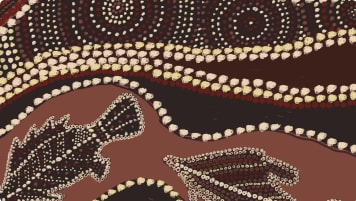Norman Tindale’s Aboriginal Tribes of Australia
An Antipodean travel company serving World Travellers since 1983 with small group educational tours for senior couples and mature solo travellers. Tours are supported by a collection of articles to inform and extend the travellers knowledge of Aboriginal culture and history. This article supports an understanding of kinship systems.
23 Apr 22 · 11 mins read

Norman Tindale’s Aboriginal Tribes of Australia
By Marco Stojanovik
Norman B Tindale – pioneering anthropologist, archaeologist, entomologist, and ethnologist – is best remembered for his work mapping the distribution of Indigenous Australian people and their languages. His lifetime project utilised data from various sources, including his own field observations in Aboriginal communities all over Australia from as early as the 1920s; original manuscripts from explorers and missionaries; and direct contributions from Aboriginal people, who mapped out their ancestral countries and mythological trajectories.
Based on this research, Tindale published his first attempt to list all Aboriginal Australian groups at the time of European settlement, along with a continental map of their territories, in “Distribution of Australian Aboriginal Tribes” in 1940. He would then continue his work following the Second World War, embarking on numerous field expeditions to complete a more comprehensive map and accompanying gazetteer. Taking nearly three decades to complete, this was published in 1974 as a book: Aboriginal Tribes of Australia.
Aspects of Tindale’s work have been met with controversy, particularly his classification of heterogenous groups as “tribes”. Nevertheless, his representation of Indigenous people as filling every part of the Australian continent helped significantly to avow their pre-colonial presence and overturn the concept of Australia having been terra nullius (land belonging to no-one).
This article explores Tindale’s mapping of the distribution of Australian Aboriginal people and their languages. It covers the background to Tindale’s study, his classifications of Aboriginal communities, and his anthropological research into the names of the Aboriginal groups he refers to as tribes. This information is intended as practical knowledge for a number of Odyssey Traveller small group tours in Australia, part of a continuing series of pieces on Aboriginal art, culture, and settlement, and the ancient landscapes of Australia. Our tours are for both the mature and senior traveller, as part of a couple or as a solo traveller.
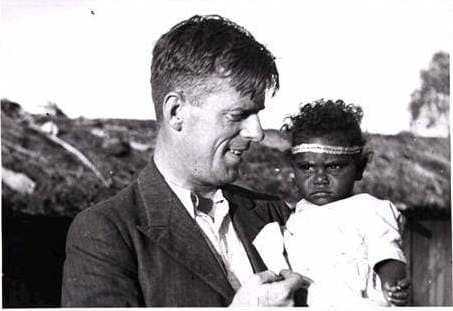
Norman Tindale’s Anthropological Research
Tindale’s interest in mapping the various groupings of Aboriginal Australians began during his yearlong research trip in 1921 and 1922 in Groote Eylandt, in the Gulf of Carpentaria. Here, Tindale’s helper and interpreter Maroeadunnei, a Ngandi tribe songmaker form the interior of Arnhem Land, introduced him to the idea of the existence of tribal boundaries, beyond which it was dangerous to move without adequate recognition.
Tim, the white man’s name he liked to be called, had for many years travelled through much of eastern Arnhem Land trading stone spearheads and knives. His trade parcels had been his passport to visits distant Aboriginal groups and see places denied to most outsiders.
Tim’s account of the peoples he had visited, as well as his guidance in the matter of vocabulary changes, enabled Tindale to write a paper containing data and a map of southern Arnhem Land tribes. It would be his first map of many, as he shifted his focus towards researching information that had a bearing on Aboriginal territoriality from that time onwards.
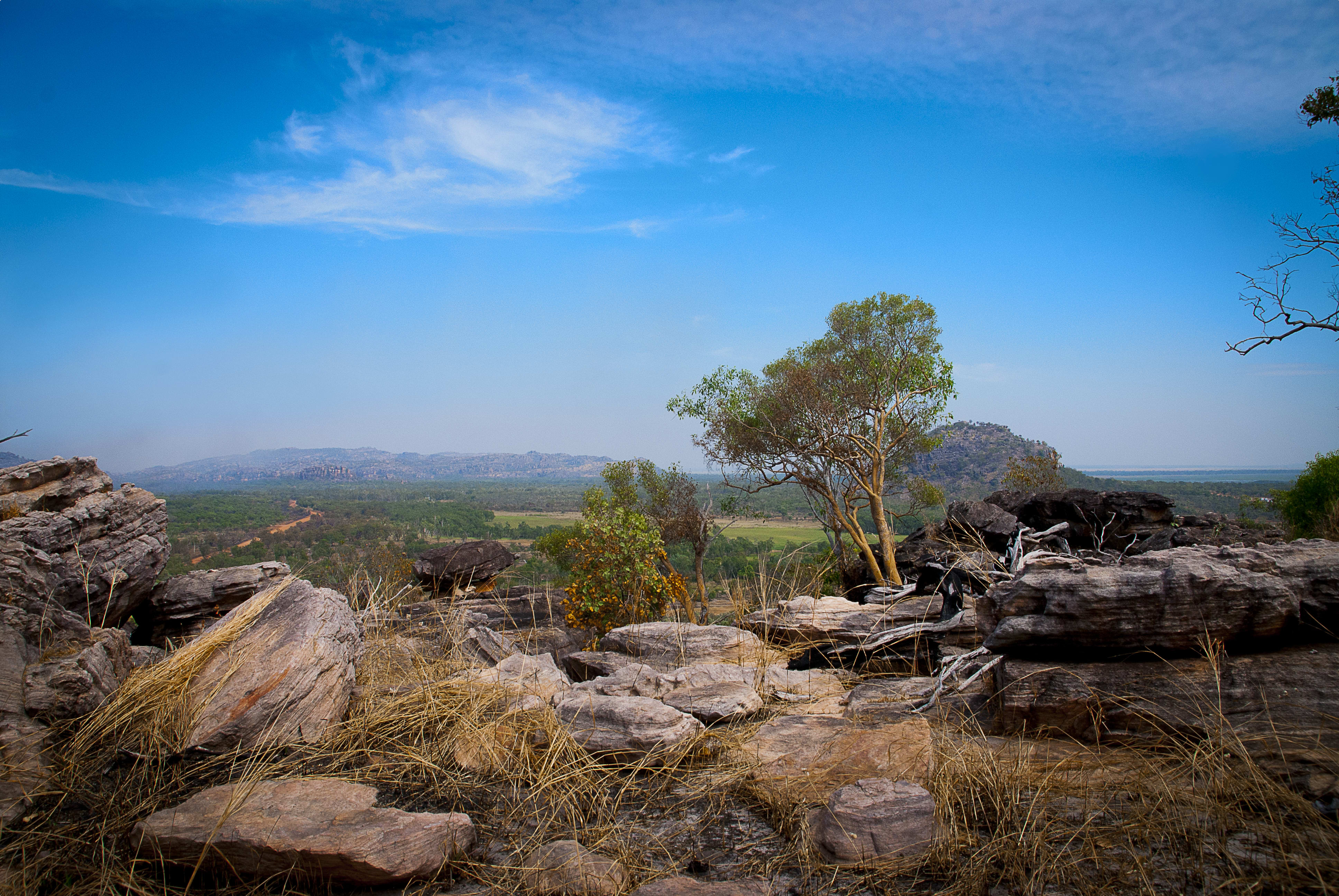
In 1927, he was appointed Curator of Anthropology at the South Australian Museum, and then any field research opportunities over the following forty years were used to gather further data by direct contact with Aboriginal people. The body of work compiled over these years by individuals under the leadership of Tindale is known as the Tindale Collection. It includes vast amounts of genealogical information about Aboriginal communities throughout Australia, as well as journals, maps, artefacts and much more. [State Library of Queensland]
In 1938-39, under the joint auspices of Harvard University and Adelaide University, Tindale collaborated with Joseph Birdsell to examine the demographic history of the Aboriginal population since European arrival. This involved undertaking extensive anthropological survey of Aboriginal reserves and missions across south-east Australia, parts of Queensland, Western Australia, and Tasmania. Detailed genealogical and photographic records of around three thousand individuals resulted from the work, and Tindale was able to publish his first continental map of Australian territories in 1940.
The relationship forged between Tindale and Birdsell developed into a decades-long collaboration. With the Second World War intervening and other duties prevailing, their Australia-wide field investigations recommenced among Aboriginal mission and settlement communities in 1952, funded mainly by the University of California.
During the 1950s and 60s, Tindale then undertook many other major field trips to gather data, including in Central Australia, the Western Desert, Mornington and Bentinck Islands and northern Queensland, as well as short visits to many other places in New South Wales, Victoria, and South Australia. All data gathered was meticulously documented in his journals and cross-references to the related published literature. [Australian Dictionary of Biography]
Tindale’s Aboriginal Tribes of Australia was published in 1974 as a summary of the years of inquiry into the distribution, structure, and nomenclature of the Aboriginal language groupings on the Australian continent before the arrival of Europeans. This comprehensive text and map detailed all the known language groups (designated “tribes” by Tindale), with what he considered their proper names, together with the various alternative names and incorrect and mistaken terms assigned to them. The study also endeavoured to detail the history of Aboriginal Australia in terms of their territorial placement on the continent.
Tindale’s work was immediately received as the best available statement of the location of Australian Aboriginal groups. Significantly, it demonstrated the diversity of Aboriginal language groups across Australia, while questioning the official orthodoxy that Aboriginal people were purely nomadic. Indeed, Tindale was one of the first to suggest that Aboriginal language and nation groups held long-lasting cultural and familial connections to specific regions, with their own territorial boundaries. [State Library of Queensland]
It is true that certain aspects of Tindale’s maps have generated controversy and since been superseded. In particular, his application of the singular term “tribe” to language groups that were often heterogenous in nature has proven incorrect. As has is belief that speakers of the same language constituted a unified territorial group identity. [Australian Dictionary of Biography]
Nevertheless, his basic premise regarding groups’ connections to specific regions is true and has helped significantly to overturn the concept of Australia having been terra nullius (land belonging to no-one). For this, Tindale’s maps are still widely respected and used as a good starting point when identifying the Indigenous languages of a region. [State Library New South Wales]
Tindale’s Classifications of Aboriginal Communities
In Aboriginal Tribes of Australia, Tindale outlined three levels of Aboriginal communities: the family; clans and hordes; and the tribe. To determine how people related to each other and who would marry whom, Aboriginal used a kinship system.
At the smallest social living unit among Australian Aboriginal people is the family. Traditionally, extended Aboriginal families composed of mothers, fathers, uncles, aunties, sisters, brothers, cousins, and so on.
Groups of families would live together in one area, constituting a horde. Usually, the males would be the descendants of one man, living with their children and wives they had acquired from other contiguously placed hordes. As girls reached womanhood, they would be sent away in marriage to other hordes.
Tindale explains, “The patrilineally descended family can be viewed in another way as a clan that is tied to a given area of country by descent from a common ancestor, symbolized in an ancestral totemic being.” Men who are related as father and son possess the same totem or a related pair or group of totems.
A clan thus is considered to be composed of all the men and women who are directly descended from a given ancestral man and claim ownership of a definite area of country. This claim is based off generations of extended use by the clan’s ancestors and is registered in their myths and in the songs of their ceremonies. These recall to them the heroic acts of ancestral being who discovered, created, and occupied the area.
Whereas men remain in their clan’s territory, women are sent away to live in association with men of other clans. For this reason, Tindale explains, “It is usual to regard the horde… as the extended family unit that normally lives and roams about a given territory. It is the family extended through several generations plus women brought in and minus the girls of the family who live elsewhere.”
Tindale estimated the average number of people present in an Aboriginal horde to be 25, although numbers could be as many as 50 or even 60 persons in some hordes. However, in most areas the presence of more than about 30 persons at a time would not be tolerable. This would begin to place too great a pressure on nature, leading gradually to a depletion in availability of the best foods and water and so the horde would have to split.
Tindale recognised a series of hordes that are contiguously placed and share certain common practices as a ‘tribe’. He explains that several hordal groups may meet together with some regularity at places within their tribal territory to exploit foods and water supplies when they are abundant and sufficient for all. At other times, especially at seasons when they utilize particular foods and other supplies peculiar to their own portion of country, they may travel and live apart.
Tindale considers the “tribe” as “the normally endogamous unit most commonly recognized in Australia, generally known as occupying a given territory, speaking mutually intelligible dialects, having a common kinship system, and sharing the performance of ceremonial rites of interest to them all.”
These larger groups are now more appropriately referred to as ‘language groups’, ‘peoples’, or ‘nations’. This is the largest social unit in which Aboriginal people claim a common territory and share common bonds of kinship, language, rites, and ceremonies.
Traditionally, language groups were comprised of a few or many clans, whose members usually lived apart in hordes or occasionally smaller family units in order to better utilise the rather sparse amount of food present in their country. However, all or the majority of the members of a language group would meet periodically for reasons such as to exchange women between hordes and to perform the more important religious and initiatory rites. Only on the most favourable occasions could they do so for more than brief periods through, their ability to do so restricted by limited food supplies.
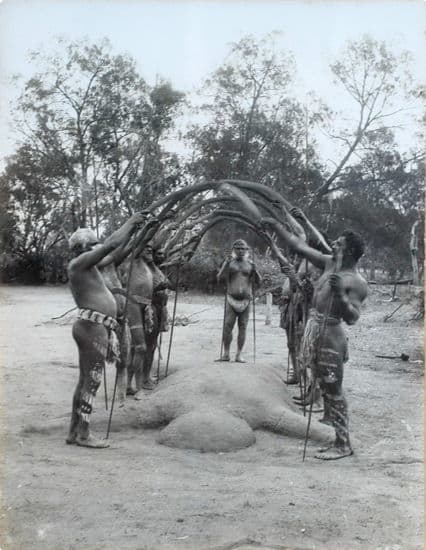
Tindale lists nearly 600 examples of Aboriginal “tribes”. He explains that population numbers at this level of social unit could range from 100 to occasionally 2000 individuals. The population would rarely exceed the ideal figure of 450 though.
The size and nature of “tribes”, Tindale explains, were strongly controlled by geography. At its greatest extent, they seemed to have a territory of a diameter no greater than about 230-40km. Even so, these dimensions were generally only found when the area was so arid that more than 130 square kilometres of territory would be necessary for the yearlong support of each person in the tribe. Interestingly, in territories more fertile, generally population numbers would not increase but rather the language groups’ areas tended to be less.
The Naming of the Nations
In Aboriginal Tribes of Australia, Tindale listed an alphabetical list of all the Australian “tribes” (or nations), noting each of their location, area, alternative names and their various spellings. He also described the various ways in which Aboriginal nations derive their names, noting that usually, it is a proper name derived from their own language. More rarely, he explains, the name has been adopted from members of some neighbouring tribe, who have adopted it to differentiate their neighbours form themselves.
Words meaning ‘man’, ‘men’, or ‘people’ are common names for Aboriginal nations. Tindale writes that the most spectacular of these are terms such as ‘Mardo’ and ‘Wati’ that indicate that these people practice circumcision and subincision in contrast to the ‘Minma’ or “women” – those who do not practice these rites and so are not admitted to be true men.
Moreover, some names are based on peculiarities in the spoken language, with differences in vocabulary used to separate one’s own nation form neighbouring ones. For example, in the Western Desert the interrogative pronouns ‘who?’ or ‘what?’ (‘naŋata, ‘ŋana and ‘ŋa:da) combined with the suffix -djara are used to make names, as in Nangatadjara, Ngadadjara, and others.
The words ‘yes’ and ‘no’ are also used as basis for some names. The nations around Perth and north along the coast, for example, use the terms for ‘no’ as nation markers, as in Juat, Wadjuk, and Wardandi. This practice also appears in the Murray basin, where the term for ‘no’ duplicated is used to designate nations’ names – for example, Joti-jota, Narinari, Wembawemba, Latjalatji, and Mutimuti.
Other names are derived from terms based on ecological and/or geographical differences found amongst the extremely varied terrain of Australia. The continent is surrounded by sea, extending through latitudes from well north of Capricorn down to the stormy fringes of the Antarctic. Climates range from wet tropical through arid desert, to the cool wet ran forests of the south. Some areas have rivers; in other areas the country is so flat water will not flow.
Unsurprisingly then, we find names such as hill people (Anjimatana) and river people (Barkindji). Terms describing coastal peoples, rain forest peoples, people of the gorges, and others are all common. Tindale explains, “In a few instances these are definitive names of tribes but more often they are applied by neighbours rather than by people to themselves, since it is often not as easy to recognise the unity of one’s own ecological or geographical niche as to summarise that of others.”
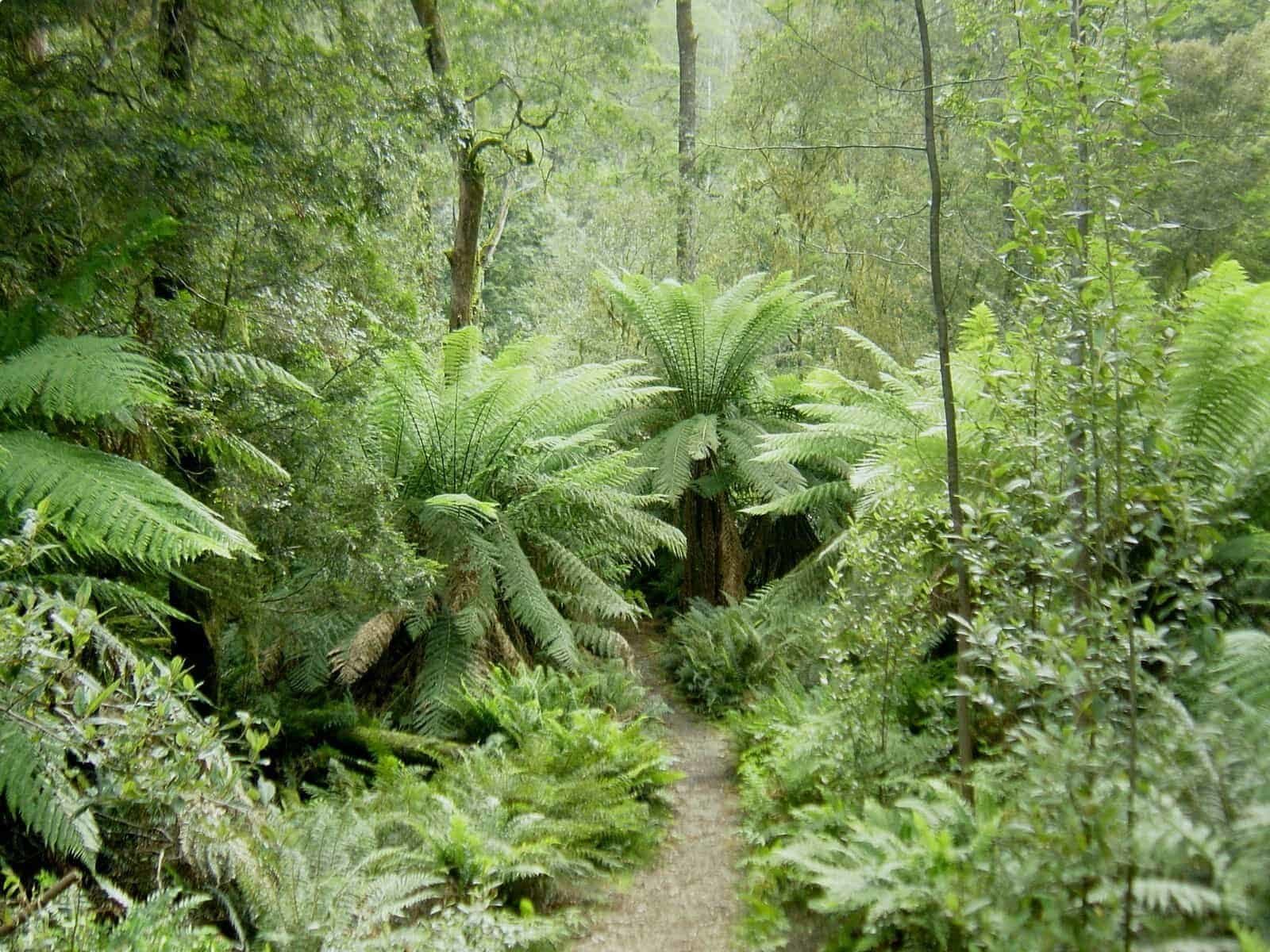
Other names include terms for ‘language’ or ‘speech’. A widespread root word, for example ‘woŋa / ‘waŋga / ‘woŋka, meaning ‘talk’ or ‘speech’ may be combined with qualifying adjectives similar to ‘good’, ‘clean’, ‘smooth’ and so forth, to denote the members of a nation. For example, ‘Woŋkumara – an invalid name for the Kalali and kindred nations – means “good speakers”.
Names can further be derived from compass directions. In southwestern Australia, for example, terms such as ‘Ko:reŋ (literally east or easterners), ‘Kaneaŋ (westerners), and ‘Min:aŋ (southerners) are all used as names for nations. Tindale explains, “In general names incorporating compass directional terms are not true names but applied by neighbours whose orientation often determines the name they apply. One who is an easterner to one people may be a western to another.”
Finally, Tindale details a category of names without known meaning. “[These] are seemingly so old,” Tindale explains, “that any direct meaning they may have once possessed seems to be lost.” The old age of some of these terms is implied by their recurrence as names among peoples far separated from one another. This would indicate the names have survived long after separated parts of what was once a single nation had sought new territories in which to live.
Tour of Aboriginal Australia
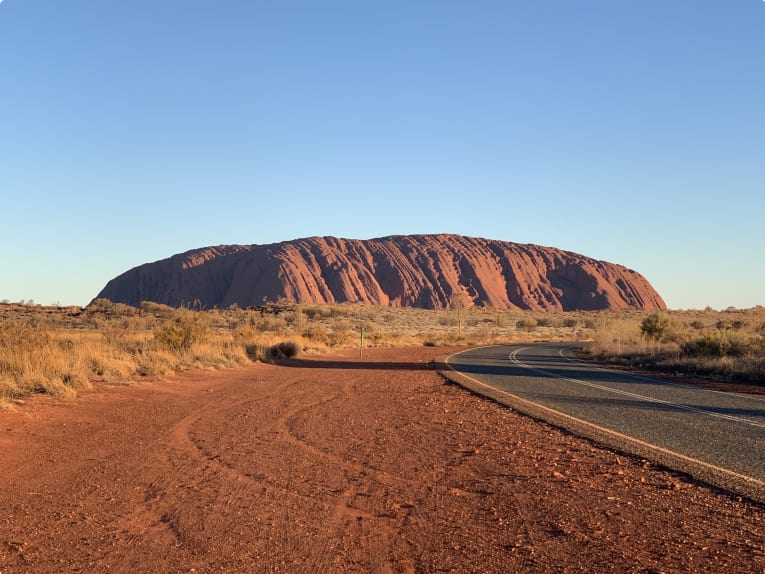
Travellers with an interest in learning more about the Aboriginal heritage of Australia may want to check out our various outback Australia tours.
These include visits to:
- Archaeological sites including the Madjedbebe rockshelter and the extensive collection of ancient Aboriginal rock art at Kakadu National Park as part of our tour of Kakadu and Darwin
- The ancient indigenous sites including Lake Mungo and the Budj Bim Cultural Landscape as part of our tour of the Southern States of Australia;
- The important cultural site of Wilpena Pound on our tour of the Flinders Ranges;
- The ancient rock art in the Kimberley, Western Australia;
- The Brewarrina Fish Traps in outback Queensland;
- Uluru and Kata Tjuta in the Northern territory.
Every Odyssey guided tour is designed especially for mature and senior travellers, who want an authentic and informed experience of their destinations. Our tours aren’t the typical tourism Australia holiday – Blue Mountains, the Great Barrier Reef, and the penguin parade on Port Phillip Island. Instead, we pride ourselves on getting of the beaten path and making you think about Australia and New Zealand in new ways. We move in genuinely small groups – usually 6-12 per tour – and all tours are cost-inclusive, encompassing accommodation, attraction entries, and transport. For more information, click here, and head to this page to make a booking.
Articles about Australia published by Odyssey Traveller:
- Uncovering the Ancient History of Aboriginal Australia
- Aboriginal History and Culture of Kakadu National Park
- Aboriginal Land Use in the Mallee
- Understanding Aboriginal Aquaculture
- Aboriginal Art
External articles to assist you on your visit to Australia:
Related Tours

days
Jun, Jul, Sep, Feb, Mar +1Darwin and Kakadu small group tour
Visiting Northern Territory
Explore and learn as part of a small group tour for seniors on this package tour to Darwin and Kakadu National park, a UNESCO world heritage site. This program also visits Arnhem land. Our focus is on ecology, landscapes and history on this 14 day program in the far north of the Northern Territory.

days
Mar, May, Aug, Sep, Oct +2Small group tour of World Heritage sites and more in the Southern States of Australia
Visiting New South Wales, South Australia
Discover the World Heritage Sites of the southern states of Australia travelling in a small group tour. A journey of learning around the southern edges of the Murray Darling basin and up to the upper southern part of this complex river basin north of Mildura. We start and end in Adelaide, stopping in Broken Hill, Mungo National Park and other significant locations.
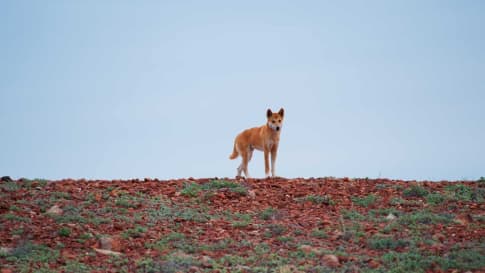
days
Apr, May, Jul, Aug, Oct +2Small group tour of Australia's Flinders ranges
Visiting South Australia
Escorted small group tour of the Flinders range in South Australia from Adelaide. Learn about Coober Pedy, Wilpena pound and water system of Lake Eyre as we explore and learn also about the history of the people who explored the Flinders.
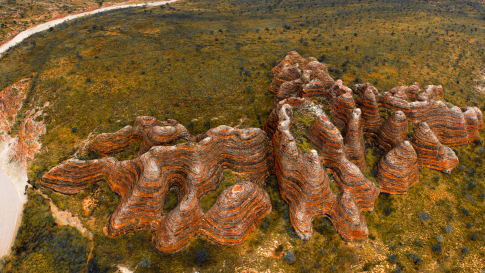
19 days
Sep, Apr, May, Jun, Jul +2Kimberley, Purnululu, Tiwi Islands and Arnhem Land
Visiting Northern Territory, Western Australia
Small group tour touring most of the Australian territory, travelling through the outback and visiting many of the famous sights as well as off the beaten track locations, giving you the opportunity the explore and meet our people in the most remote locations and far north Kakadu and the Kimberley.
From A$14,995 AUD
View Tour
13 days
May, Jun, Jul, Aug, SepSmall group tour of Australia's Kimberley
Visiting Western Australia
Escorted small group tour of the Kimberley. We explore and visit The Bungles, Bell Gorge, Mitchell plateau & Halls Creek in the dry season. Amazing landscapes intertwined with Aboriginal communities resident more than 45,000 years.
From A$15,390 AUD
View Tour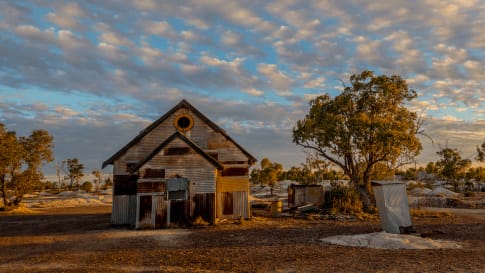
days
Mar, Apr, May, Jul, Aug +2Small group tour of outback Queensland
Visiting New South Wales, Queensland
To Dubbo and back, this small group tour takes you to learn about the Brewarrina fish traps, we travel high up into North Queensland to see the Dinosaurs of Winton and incredible Aboriginal rock art at Cathedral gorge and learn about opal mining and the history of Lightning ridge.

days
Apr, Jun, Aug, Nov, Mar +2Exploring Alice Springs and Uluru-Kata Tjuta National park by Motorbike
Visiting
Explore on a Motorbike tour in the Outback and learn about historic Alice Springs, The MacDonnell ranges, and Uluru-Kata Tjuta national park. This escorted small group Motorbike tour for mature and senior travellers, travelling as a couple or solo travellers also visits the Hermannsburg Lutheran mission plus Henbury meteorite site learning about the Aboriginal outback and contemporary art.

days
Apr, May, Jun, Jul, Aug +3Small group tour exploring Alice Springs and Uluru-Kata Tjuta National Park
Visiting Northern Territory
Explore and learn about historic Alice Springs, The MacDonnell ranges, and Uluru-Kata Tjuta National Park. This escorted small group tour for mature and senior travellers, travelling as a couple or solo travellers also visits the Hermannsburg Lutheran mission plus Henbury meteorite site learning about the Aboriginal outback and contemporary art.
Related Articles

Aboriginal Art
Senior and mature couples and solo travellers remain curious but often informed about the role Aboriginal art plays in the indigenous community and the various styles. This article seeks to provide a platform for this collection of small group tours of upto 15 people into the Australian outback where often Aboriginal art styles are encountered.
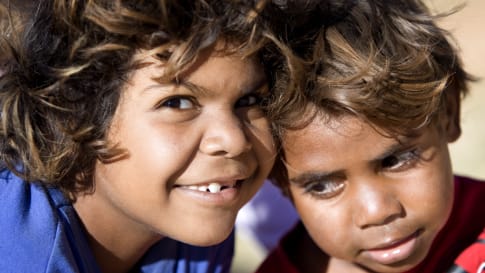
Aboriginal Kinship systems
Article about Aboriginal kinship to assist small group tours in Australia understanding Ancient aboriginal society and the contemporary view. Kinship influences the relationships including aboriginal trading routes.
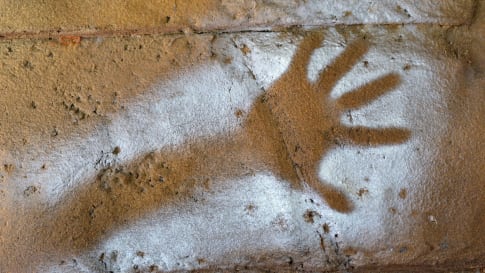
Aboriginal Messages
An Antipodean travel company serving World Travellers since 1983 with small group educational tours for senior couples and mature solo travellers. Article part of series about Australia and its first nation people who have settled here for some 120,000 years.

Aboriginal Songlines
Songlines trace the journeys of ancestral spirits who created the land and all natural phenomena. The creation stories as well as practical knowledge needed for survival in outback Australia. We experience this knowledge on our small group tours into Outback Australia.
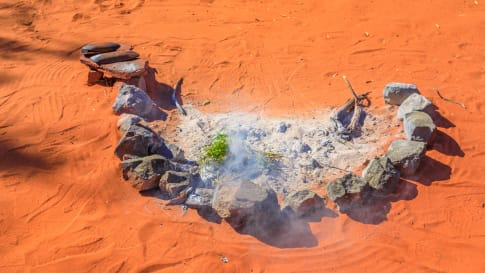
Australian Aboriginal Paths of Migration
Article for small group tours of mature or senior couples or solo travellers interested in learning more about Aboriginal history, Kinship, trading routes, songlines and ancient history.

Bora Rings: Ancient Aboriginal Ceremonial Grounds
Article for mature and senior travellers, couple or solo joining an Aboriginal history small group tour of Australia. Small groups of like minded people exploring outback Australia, colonial history and Landscapes.

Warri and Yatungka: Last of the Gibson Desert Nomads
Peasley recounts the outback Australia in Western Australia to find Warri and Yatungka in the Gibson desert. A touching story and introduction to totems and songlines of first nation peoples. An Antipodean travel company serving World Travellers since 1983 with small group educational tours for senior couples and mature solo travellers.
